Most acne is caused by excessive oil secretion, so oil control is the primary goal of acne control. Clinical studies have shown that about 85% of acne is closely related to excessive oil secretion of sebaceous glands.
In a survey of 500 people with frequent acne, 425 of them (85%) had skin oil secretion far exceeding the normal standard, and the severity of acne was positively correlated with oil secretion. In the oil control intervention experiment, the use of skin care products with oil control effect significantly reduced the incidence of acne.
By the end of 2024, the top five oil control and acne-removing ingredients added to cosmetics are tea extract, witch hazel extract, lactic acid, salicylic acid, and mint leaf extract. Taking tea extract as an example, the global green tea extract market size has reached US$3.8 billion in 2024, with an annual growth rate of 14.5%.
This article selects the 18 most popular oil control and acne-removing ingredients in 2024 from the perspective of the growth rate of formula usage.
NO.1 Lithospermum officinale root extract
It is a bioactive ingredient extracted from lithospermum officinale root, which has anti-inflammatory, antibacterial and soothing effects on the skin and can be used to improve uneven skin tone. In addition, it can promote the regeneration of skin cells and reduce the formation of acne scars.
Anti-lithospermum officinale root extract is a fine brown or purple-black powder, which is easily soluble in ethanol, organic solvents and vegetable oils, and insoluble in water. Highest historical usage: resident type (12%)
Adding it to makeup can reduce skin inflammation caused by long-term makeup and reduce the chance of acne. It can also relieve damage to the skin caused by makeup removal.
Adding methods in makeup: In liquid foundation and lip glaze, it can be dissolved in organic solvents and vegetable oils before adding; in pressed powder and loose powder, it can be made into microcapsules and added. However, because its color is brown or purple-black, it will affect the color of makeup, and the amount must be strictly controlled when adding.
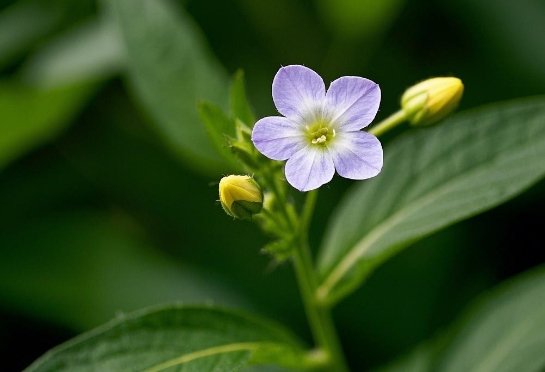
NO.2 Pyridoxine (Vitamin B6)
Pyridoxine, also known as vitamin B6, is a colorless crystal that is easily soluble in water and ethanol, stable in acid, and easily destroyed in alkaline.
Vitamin B6 is a component of certain coenzymes in the human body and participates in a variety of metabolic reactions. It can be used as a skin conditioner to regulate the secretion of oil glands and prevent various dermatitis, and reduce the production of melanin.
Pyridoxine can normalize the protein and amino acid metabolism of the head skin, adjust the vitality of the scalp sebaceous glands, treat seborrheic dermatitis, and improve the condition of oily hair; it can also reduce the hormone prolactin, thereby reducing hair follicle atrophy and maintaining the health of hair.
Cosmetics can easily lead to abnormal secretion of oil glands. Pyridoxine regulates the secretion of oil glands to keep the skin fresh. It can reduce the risk of inflammation caused by makeup allergies and help improve the brightness of the skin.
Addition method: It can be directly dissolved and added in eyeliner and mascara; in other cosmetic products, it is necessary to pay attention to its chemical stability to avoid the effect being affected by different pH values.
NO.3 Medicinal Mushroom Cluster Extract
It is a product extracted from medicinal mushroom clusters, usually in the form of brown or yellow – brown powder or liquid, and is easily soluble in water.
It has the effects of antioxidant, anti – inflammation, soothing, and skin – care (such as shrinking pores, controlling oil and reducing acne, making the skin healthier and smoother).
In cosmetics, the extract from medicinal mushrooms can extend the shelf – life of cosmetics. Its anti – inflammatory and soothing effects can help shrink pores, make the skin more delicate, and improve the adhesion of cosmetics.
Adding methods in cosmetics: If it is in powder form, it can be added by air – flow mixing during the production of powder – based cosmetics. If it is in liquid form, it can be directly mixed into liquid cosmetics, but attention should be paid to preventing layering and sedimentation.
NO.4 Mandelic acid
Mandelic acid is a high molecular weight fruit acid, a member of the AHA fruit acid family, with a chemical formula of C8H8O3 and a molecular weight of 152.15. It usually appears as white rhombic flake crystals, but it will change color and decompose when exposed to light.
Mandelic acid has an exfoliating effect, can accelerate the metabolism of skin cells, remove melanin, and has the effect of whitening and fading acne scars.
However, because of its large molecular weight and difficulty in penetration, its whitening effect is slightly inferior to glycolic acid. However, mandelic acid is less irritating to the skin and is also suitable for sensitive skin. In addition, mandelic acid can inhibit the activity of Staphylococcus epidermidis and Candida albicans.
When applying makeup, the skin is prone to pigmentation problems. Mandelic acid’s exfoliating and fading acne scars can improve the aggravation of acne scars caused by long-term use of makeup. Its antibacterial effect can inhibit the growth of bacteria in the makeup environment and reduce acne formation.
Addition method in cosmetics: As a solid crystal, it must be ground into extremely fine powder in the production of cosmetics, and then evenly mixed into the makeup matrix. When making eyeshadow cream and blush cream, it is necessary to make sure that its powder is fully dispersed to avoid affecting makeup.
NO.5 Azelaic acid
Prostaglandins and leukotrienes are inflammatory mediators that can easily cause skin inflammation. Azelaic acid can inhibit the generation of these mediators, reduce skin inflammatory reactions, and has a significant effect on the treatment of inflammatory skin diseases such as acne and rosacea.
Moreover, azelaic acid can also inhibit the growth and reproduction of bacteria such as Staphylococcus aureus and Staphylococcus epidermidis, and treat acne and impetigo.
Application in cosmetics: Azelaic acid can effectively inhibit the generation of inflammatory mediators and bacterial growth and reproduction, and reduce the occurrence of acne.
Addition method: Under standard conditions, azelaic acid is in the form of white powder. It is slightly soluble in cold water, but soluble in hot water, ether and ethanol. In the production of cosmetics, it can be first dissolved in hot water, ether or ethanol, and then added to the corresponding cosmetic matrix.
NO.6 Yeast fermentation product
Yeast fermentation product is the main strain of alcohol fermentation. The filtrate of yeast fermentation product is rich in small molecule amino acids, peptides, nucleotides, and vitamins. It is a very good comprehensive skin conditioner that can be used for balancing oil, whitening and lightening, and moisturizing and repairing.
Application in cosmetics: Yeast fermentation products can balance oil and make makeup more durable. Its whitening and lightening and moisturizing and repairing effects can improve skin texture, and make the makeup effect more natural.
Adding method: The fermentation product is acidic and soluble in water. Therefore, it can be added directly to water-based cosmetics, and in oily cosmetics, it needs to be dissolved with the help of emulsifiers.
NO7 Lactobacillus fermentation product
Applied in cosmetics: Lactobacillus fermentation products can make cosmetics maintain good adhesion on oily skin. Its whitening and moisturizing effects can make the makeup more docile after application, making the makeup more natural and moisturized.
Adding method and precautions: It is most suitable for direct addition to water-based cosmetics. But when adding it to other cosmetics, pay attention to adjusting the pH of the product.
NO.8 Salicylic acid
Salicylic acid can penetrate the stratum corneum of the skin, promote the shedding of the stratum corneum, improve the roughness and dullness of the skin, and make the skin more delicate.
In addition, it has a certain anti-inflammatory effect, can inhibit the growth and reproduction of Propionibacterium acnes, and help treat acne. It can also remove excess oil in the pores, improve the skin environment, and reduce the possibility of acne growth.
Efficacy in cosmetics: Salicylic acid promotes the shedding of the stratum corneum, which can make cosmetics easier to fit the skin and make the makeup more delicate. Its characteristic of inhibiting the growth of Propionibacterium acnes can reduce the acne problem caused by the use of cosmetics.
Addition method: The appearance is white needle-like crystals or hairy crystalline powder, which is easily soluble in ethanol, ether, chloroform, and slightly soluble in water. Therefore, in the setting spray, it is recommended to dissolve in a suitable organic solvent before adding; in powdered cosmetics, it can be made into a micro powder form for addition, but the amount of addition must be strictly controlled because it has obvious skin irritation.
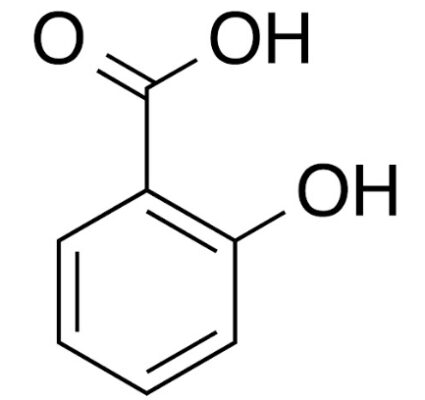
NO.9 Olive Leaf Extract
Common active ingredients in olive leaf extract include oleuropein and hydroxytyrosol, which have strong antibacterial effects. It can reduce the release of inflammatory factors, reduce inflammatory reactions, and relieve skin redness, swelling, and pain symptoms.
Efficacy in cosmetics: The antibacterial effect of olive leaf extract can inhibit the growth of bacteria during the use of cosmetics and reduce the risk of skin infection.
Addition method: Olive leaf extract is usually a dark green or brownish-yellow liquid or powdery substance, which is easily soluble in ethanol and acetone. If it is a liquid, it can be directly added to liquid or paste cosmetics.
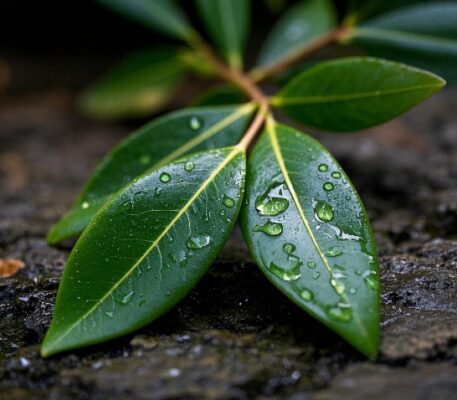
NO.10 Piroctone olamine
Piroctone olamine, also known as Ectoin, was first isolated from the Egyptian desert salt lake by Galinski in 1985.
Studies have shown that in experiments simulating high temperature (45°C), severe cold (-15°C), drought (relative humidity 10%), extreme pH (pH 2 and pH 12), high pressure (50MPa), and high salt (15% sodium chloride solution), the survival rate of cell models containing Ectoin was 30%-50% higher. In terms of skin care, a clinical trial on 200 volunteers showed that after using skin care products containing Ectoin for 4 weeks, the skin inflammation index decreased by an average of 25%, and the redness of the skin after ultraviolet radiation was reduced by 30%.
Application: Ectoin can be added to foundation and loose powder to resist external environmental stimuli and reduce makeup removal caused by dryness.
Addition method: Ectoin is suitable for dissolving in water or oil phase and mixing with other ingredients under appropriate temperature and stirring conditions.
NO.11 Cynanchum atratum extract
Cynanchum atratum extract contains natural anti-irritation factors. Studies have found that it can effectively block the transmission of allergenic signals. In cell experiments, it can reduce the expression of inflammatory cytokines such as IL-2, IL-8, and TNF-α by 40%-60%.
In actual application, a study of 150 acne patients showed that the improvement rate of acne symptoms in people who used skin care products containing Cynanchum atratum extract within 6 weeks reached 70%.
Application: It is suitable for adding to concealer and primer, which can block the transmission of allergenic signals, relieve skin inflammation and sensitivity, and make the skin less prone to redness and acne.
Adding method: First make the Cynanchum atratum extract into a suspension, then add it to the makeup formula and stir evenly.
NO.12 PCA zinc
PCA zinc, also known as zinc pyrrolidone carboxylate, is a component of the natural moisturizing factor (NMF) inherent in the skin. It has the effect of inhibiting excessive sebum secretion and anti-inflammatory effects, as well as the function of keeping the stratum corneum hydrated and maintaining the health of the barrier, and is suitable for oily skin.
Efficacy of application in makeup: PCA zinc can effectively inhibit excessive sebum secretion, keep oily skin fresh after using makeup, and reduce oiliness. Its moisturizing function can make makeup more docile.
Addition method and precautions: It is a white powder with good fluidity. PCA zinc is easily soluble in water and can be evenly dispersed in the cosmetic matrix. Therefore, it is easy to add to various cosmetic products. Just add it in proportion and stir it evenly during the production process.
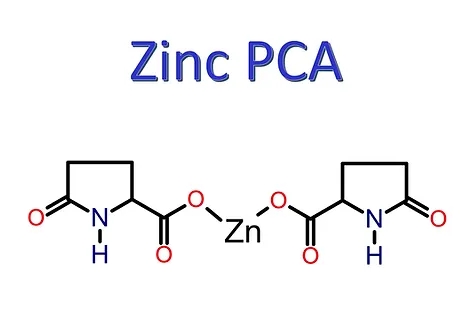
NO.13 Quaternary ammonium salt – 73
Quaternary ammonium salt – 73 is a light yellow to yellow crystalline powder with strong antibacterial activity. In in vitro experiments, only a concentration of 0.01 mg/mL is needed to inhibit the growth of Staphylococcus aureus, Escherichia coli and Candida albicans.
In a study on Propionibacterium acnes, it was found that Pionin can reduce the number of Propionibacterium acnes by 80% within 24 hours and maintain a low bacterial count after 72 hours.
Quaternary ammonium salt – 73 is relatively stable at room temperature, but may decompose at high temperatures (over 60°C).
Application: Quaternary ammonium salt – 73 can be added to lipstick, lip gloss and mascara to exert its antibacterial effect and prevent product deterioration or bacterial growth. In addition, it can remove acne and inhibit the formation of melanin, which can improve acne and dullness on the lips.
Addition method: Add directly and stir according to the formula ratio at room temperature, but be careful to avoid high temperature environment.
NO.14 Hydroxypinacolone retinoic
Cosmetic Oil Control and Acne Removal Ingredients:Hydroxypinacolone retinoic acid ester (HPR) is formed by dehydration condensation of retinoic acid and pinacol.
In the transdermal absorption experiment, the transdermal absorption rate of HPR increased by 30%-40%, while the irritation was reduced by 50%, and the phototoxicity and photosensitivity were lower. In the study on skin aging, the experimental group using HPR skin care products had a 25% faster skin stratum corneum renewal rate and a 18% reduction in wrinkle depth. In the test for oily skin, after using products containing HPR for 4 weeks, the skin oil secretion decreased by 22%.
Application: It can be used in anti-wrinkle foundation liquid, etc., which can accelerate the renewal of the skin stratum corneum and reduce the depth of wrinkles.
Addition method: After the oil phase of the makeup product is partially dissolved, mix it evenly with other ingredients.
NO.15 Zinc gluconate
Zinc gluconate is a common skin conditioner in cosmetic formulas. In a wound healing experiment, the experimental group using zinc gluconate products had a wound healing time that was 2-3 days shorter than the control group, which can prevent bacterial infection and promote wound healing. At the same time, in a study on acne, about 60% of the subjects had improved acne symptoms after using zinc gluconate skin care products for 8 weeks.
Application: Zinc gluconate can be added to powder and makeup setting spray to promote wound healing. For acne-prone and damaged skin, it can help the skin recover after using makeup.
Addition method: Dissolve zinc gluconate in the water phase and mix with other ingredients.
NO.16 Salicin
Cosmetic Oil Control and Acne Removal Ingredients:The cosmetics use dried white willow bark, and its main active ingredient is salicin. Studies have shown that salicin has aspirin-like properties and is often used to heal wounds and relieve muscle pain.
In terms of skin care effects, salicin has anti-aging, exfoliating and acne-removing effects. In a 10-week human experiment, the number of acne in the stratum corneum of the subjects who used skin care products containing white willow bark extract decreased by 35%.
Application: Salicin can be used in eye shadow and eyebrow pencils to make the skin around the eyes and eyebrows smoother, reduce fine lines around the eyes, and make the makeup effect more natural.
Addition method: First crush the white willow bark extract, and then grind and stir it during the production process of makeup products.

NO.17 Phellodendron bark extract
Cosmetic Oil Control and Acne Removal Ingredients:Phellodendron bark extract contains a variety of bioactive ingredients, such as phellodendronine, palmatine, baicalin, and daurine. In cell experiments, cells treated with phellodendron bark extract increased collagen synthesis by about 30%. At the same time, it can effectively remove free radicals and improve antioxidant capacity. In skin care, it can regulate the water and oil balance of the skin, resist inflammation, and reduce inflammation and acne.
Application: It can be added to foundation liquid, air cushion and other cosmetics with skin care effects to promote collagen production, regulate the water and oil balance of the skin, reduce inflammation, so that the skin can still maintain a healthy state after using cosmetics, and the makeup is more natural and lasting.
Addition method: It is usually made into an extract solution and added during the emulsification process of the cosmetic product, and it is evenly dispersed in the product system by high-speed stirring and other methods.
NO.18 Cosmetic Oil Control and Acne Removal Ingredients:Chlorella extract
Chlorella extract is an active ingredient extracted from chlorella. It is rich in 7 essential amino acids, vitamins, and lutein, which can promote the metabolism of skin cells. In cell experiments, it can increase the metabolism rate of skin cells by 20%-30%, making the skin tighter.
Chlorella extract also has anti-aging, anti-inflammatory, antioxidant, and moisturizing functions. For example, in the moisturizing test, the skin moisture content of the subjects who used skin care products containing chlorella extract remained stable within 4 hours and increased by about 10%.
Application: Chlorella extract is suitable for adding to lip masks, facial masks, and moisturizing lipsticks. Its rich nutrients can nourish the skin, enhance skin elasticity, and make the lips less prone to dryness and peeling.
Leecosmetic:Using raw materials from internationally renowned companies
Leecosmetic is a wholesale cosmetic manufacturer in China that delivers quality cosmetics at competitive prices. We provide private label OEM/ODM custom makeup service.
As a rapidly growing private label cosmetics manufacturer, Leecosmetic has been using raw materials from internationally renowned companies in a safe and efficient manner.
Inquiry Now
Company photo:
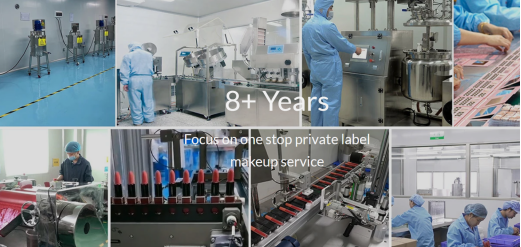
Contact: https://leecosmetic.com/contact-us/
Conclusion
Cosmetic Oil Control and Acne Removal Ingredients:This article details the list of the most popular cosmetic anti-acne formulas in 2024 and their application and addition methods in color cosmetics. If you are engaged in the manufacture and marketing of color cosmetics, this information can help you improve the cosmetic formula, thereby improving the product’s use effect and winning consumer support.
